Get Tech Tips
Subscribe to free tech tips.
Gas Furnace Maintenance Procedure
This gas furnace maintenance procedure in this article was developed by Michael Housh. Michael is the owner of Housh Home Energy in Ohio. He regularly works on natural gas equipment and is an active contributor to the HVAC School Facebook group. Thanks, Michael!
Gas-fired equipment has a different set of components than your typical straight-cool A/C unit or heat pump. With gas pressures to test, sensors to clean, and combustion to analyze, it can be difficult to figure out where to begin a maintenance procedure on a gas furnace.
So, here is a start-to-finish guide to a thorough gas maintenance procedure developed by none other than Michael Housh.
Visual inspection
As with any other type of HVAC system, gas furnaces require you to do a thorough visual inspection before you even touch your tools.
1. Familiarize yourself with the equipment and see how it operates.
Check to see what the furnace efficiency is; are you dealing with a standard 80% furnace or a 90%+ high-efficiency furnace? Does the system use natural gas or liquefied petroleum (LP or propane)? Unless you’ve worked on a system before and are familiar with it, the best thing to do here is to check the data plate. The data plate also has the manifold pressure, minimum and maximum gas pressures, and all sorts of information that will be useful later.
With all that in mind, it may be beneficial to activate the equipment from the thermostat. If you raise the setpoint, you can see how the equipment operates. Whenever the system fails to start or does something odd, you can have a conversation to occur with the customer before taking anything apart.
2. Check for water leakage around the system (on high-efficiency furnaces).
If you’re working on a 90%+ furnace, you will want to inspect the gaskets, condensate drain, and blower compartment closely for signs of water leakage. If you see evidence of water leakage, then you might be dealing with a failed component like a gasket, cracked collector box, or secondary heat exchanger.
3. Inspect the filters and auxiliary equipment.
Filters and auxiliary equipment, such as humidifiers and dehumidifiers, are often crucial to the home’s indoor air quality and the occupants’ health. Check to see if the filter needs replacement (which they often do) and if it’s the correct size for the system. If you have a dehumidifier, check the filtration on that to make sure it’s appropriate and see if it needs replacement. While you’re at it, make sure the dehumidifier’s float switch hasn’t been tripped. If you have a humidifier, check the water panel to see if it needs replacing or if the humidifier needs to be cleaned.

4. Check the venting.
When you check the venting, make sure that the flue isn’t blocked. In many cases, rodents or birds may make their nests in flues and chimneys, so it’s best to be on the lookout for those. You’ll also want to make sure the vent piping is appropriate for the system (for example, high-efficiency gas furnaces often use plastics like PVC). Check for unsafe backdraft risk factors, such as orphaned water heaters, too. Melted grommets or insulation on the top of a water heater are often a sign of backdrafting or spillage from the draft hood.

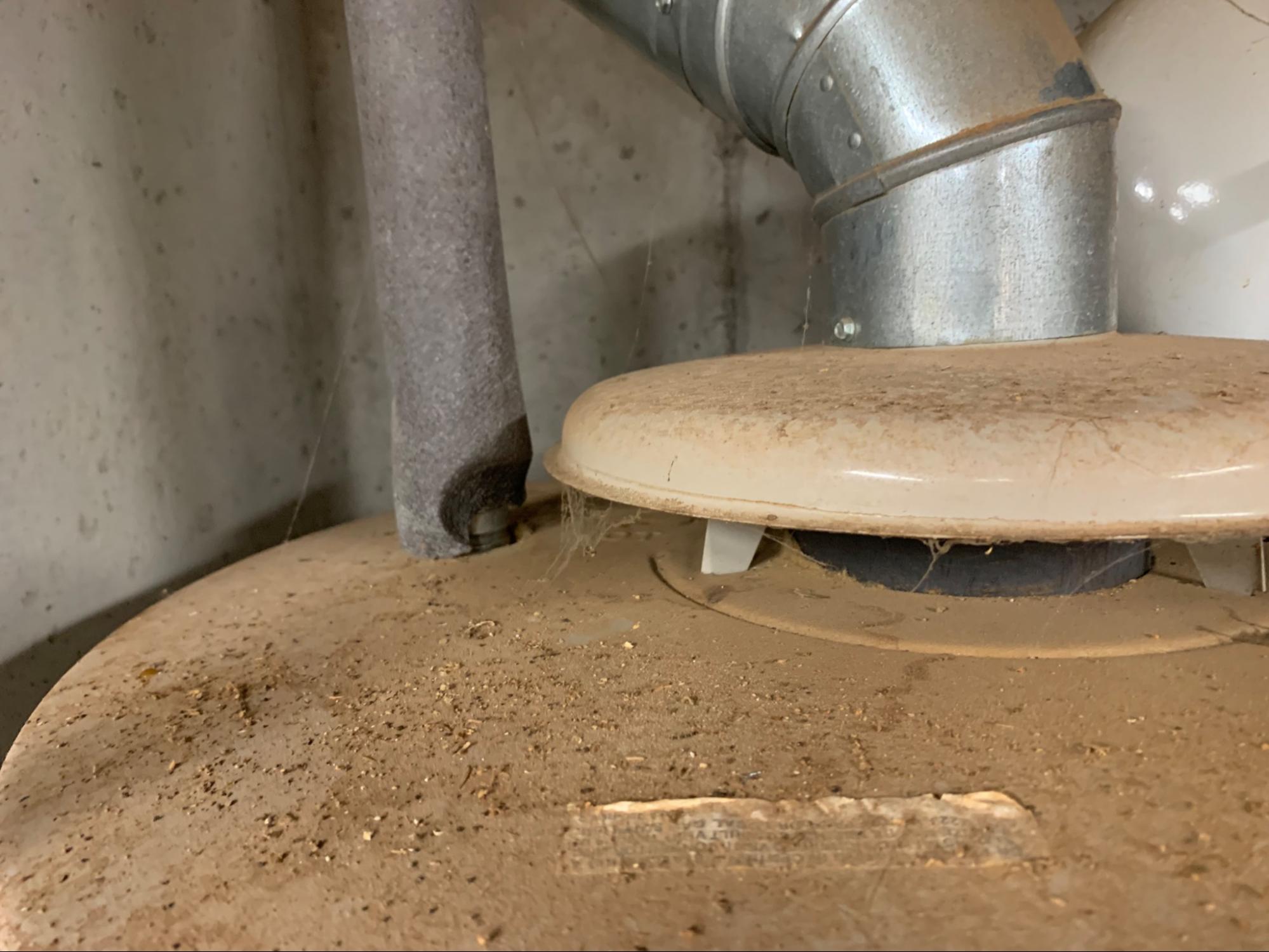
Cleaning and inspection
After you complete your visual inspection, it’s time to move on to checking and cleaning the individual components of the furnace.
5. Check and clean the flame sensor or pilot assembly.
You’ll generally see flame sensing rods in modern hot-surface ignition (HSI) or intermittent-spark ignition (ISI) systems. Flame rods may fail to work properly if the ceramic insulation has cracked, they aren’t fully placed in the flame, or they get coated in silica. So, you’ll want to keep an eye out for those conditions and address them. To learn more about flame sensing and testing flame sensors, I recommend checking out THIS article.
In the case of standing pilot assemblies, you will want to make sure that the thermocouple is proving flame and keeping the pilot valve open during operation (and closed when not operating). Thermocouples are made of dissimilar metals that warp when exposed to heat; unlike flame sensors, thermocouples actually produce current when the metal warps. To learn more about testing thermocouples, check out THIS article.
6. Check and clean out the condensate trap.
If you’re working on a high-efficiency gas furnace, you need to be able to keep the condensate trap in good condition. Traps can potentially get blocked and require cleaning on EVERY maintenance call, even if that just means flushing water through the drain and making sure it flows properly through all the ports.
7. Check and clean the burners.
Although this step is important for all furnace types, it’s especially critical for LP systems. Make sure the power is OFF before you inspect the burners for damage and clean them. In most cases, a soft-bristled brush works well for the surface, compressed air will blow debris out of the interior, and a thorough wipe with a damp rag works well to finish up the cleaning.
8. Visually inspect all pressure ports and hoses.
While you’re checking major components, be sure to remember the ports associated with pressure switches. Combustion debris, spiderwebs, and other forms of small debris can make their way into these ports, leading to partial blockages that obstruct airflow. You’ll want to make sure these ports are clear.
It’s also a good idea to inspect the hoses for cracks or breaks and then blow through the connection hoses to ensure that they are clear.
9. Inspect the heat exchanger(s).
Although standard 80% gas furnaces typically have one heat exchanger, high-efficiency furnaces have a primary and a secondary heat exchanger. No matter how many heat exchangers the furnace has, be sure to inspect those for cracks, which can lead to deadly carbon monoxide poisoning if left unchecked.
Prepare for testing
Testing is the bread and butter of a good maintenance procedure; after all, now is the time to make sure your equipment is running properly. Before you get into the thick of testing, it’s best to make sure you’re familiar with the way the equipment operates
10. Take your supply and return air temperatures.
You can use those values to get your temperature rise, which tells you how well the appliance is heating the air. (That’s kind of like the delta T of heating.) You won’t take your official temperature rise until later, as there are a few extra steps involved with temperature rise, but you can get an idea of the unit’s average performance early on.
11. Take your static pressure measurements.
As a rule of thumb, it’s a good idea for the static pressure to be less than the maximum specification listed on the data tag.
12. Read your inlet and outlet gas pressures.
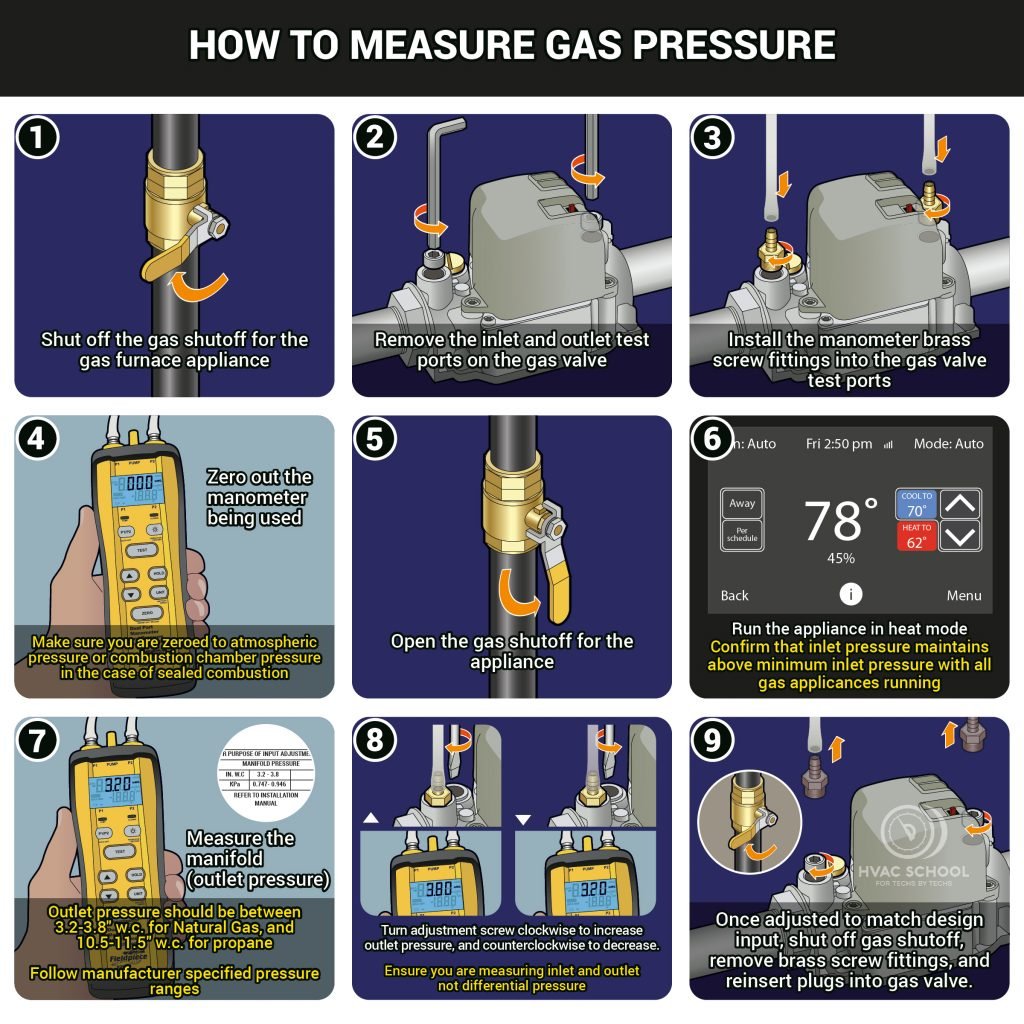
As stated earlier, you can find the rated gas pressures on your data tag so that you know what those values should be when you test the gas pressure.
We have a video of an entire class on reading gas pressure, which you can watch HERE, but we’ll just cover the basics in this article. You start that by shutting off the gas cock (also known as the shutoff valve). Then, you’ll want to remove the inlet and outlet ports of the gas valve (the Gemini valve requires you to loosen the ports instead), where you will replace the ports with your manometer’s barbed brass fittings. Attach the manometer’s hoses to the barbed fittings.
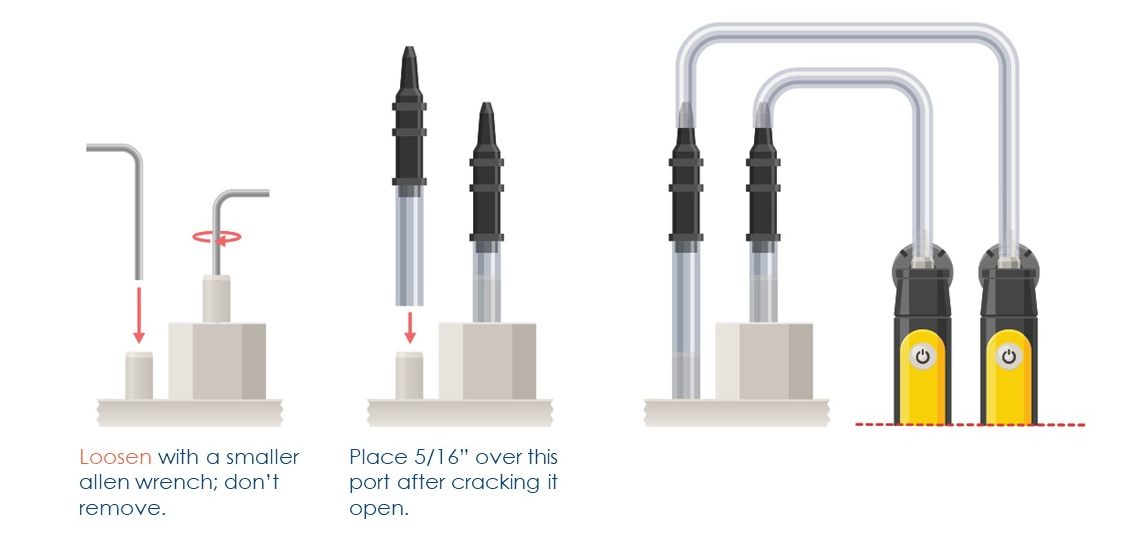
Once the manometer is connected to the gas valve by the fittings and hoses, you have to zero it out to atmospheric pressure; if you’re dealing with sealed combustion, zero it out to the combustion chamber’s pressure. Open the shutoff valve, run the appliance in heat mode, and measure the pressure on your manometer, ensuring that the inlet pressure stays above the minimum value on the data tag while all the gas appliances are running. Then, make sure the outlet pressure adheres to the value on the data plate.
Begin testing
Once you have a basic idea of how the system operates (and how it should be operating), you can dig into the test procedures.
13. Measure/adjust the gas pressure.
Once you’ve measured the gas pressure at the inlet and the manifold, you can make any necessary adjustments to match the manufacturer’s specs. You would do that by using a flat-blade screwdriver and rotating the brass adjustment screw, which is beneath a cap. Remove the cap, insert the screwdriver, and rotate it clockwise to increase the manifold pressure or counterclockwise to decrease the pressure. You will want to adjust the gas to the manufacturer’s target pressure to check for proper input.
14. Clock the gas meter.
Start by making sure all other gas appliances are off (even fireplace pilots and other seemingly insignificant natural gas appliances). Then, you’ll want to make sure the furnace is at high fire or max output. You’ll then use a stopwatch to time how long the smallest dial on the gas meter takes to make one full revolution. Then, you do some math to find the hourly BTU output (explained HERE).
After you’ve clocked the meter, you can make additional adjustments to the gas pressure. After adjusting the gas pressure, you can close the shutoff and replace the barbed fittings with the inlet and outlet ports. Make sure that you replace the fittings with the proper ports before you open the gas shutoff valve again.
15. Do your combustion analysis.
The combustion analysis will tell you about your excess air and carbon monoxide content. Most importantly, you can tell if a system is a safety risk based on the combustion analysis results. You’ll want to do combustion analysis for each cell under the draft hood, as you want to test the undiluted flue gas. Acceptable results will generally be 31-91% excess air with as little CO as possible (under 100 ppm CO air-free).
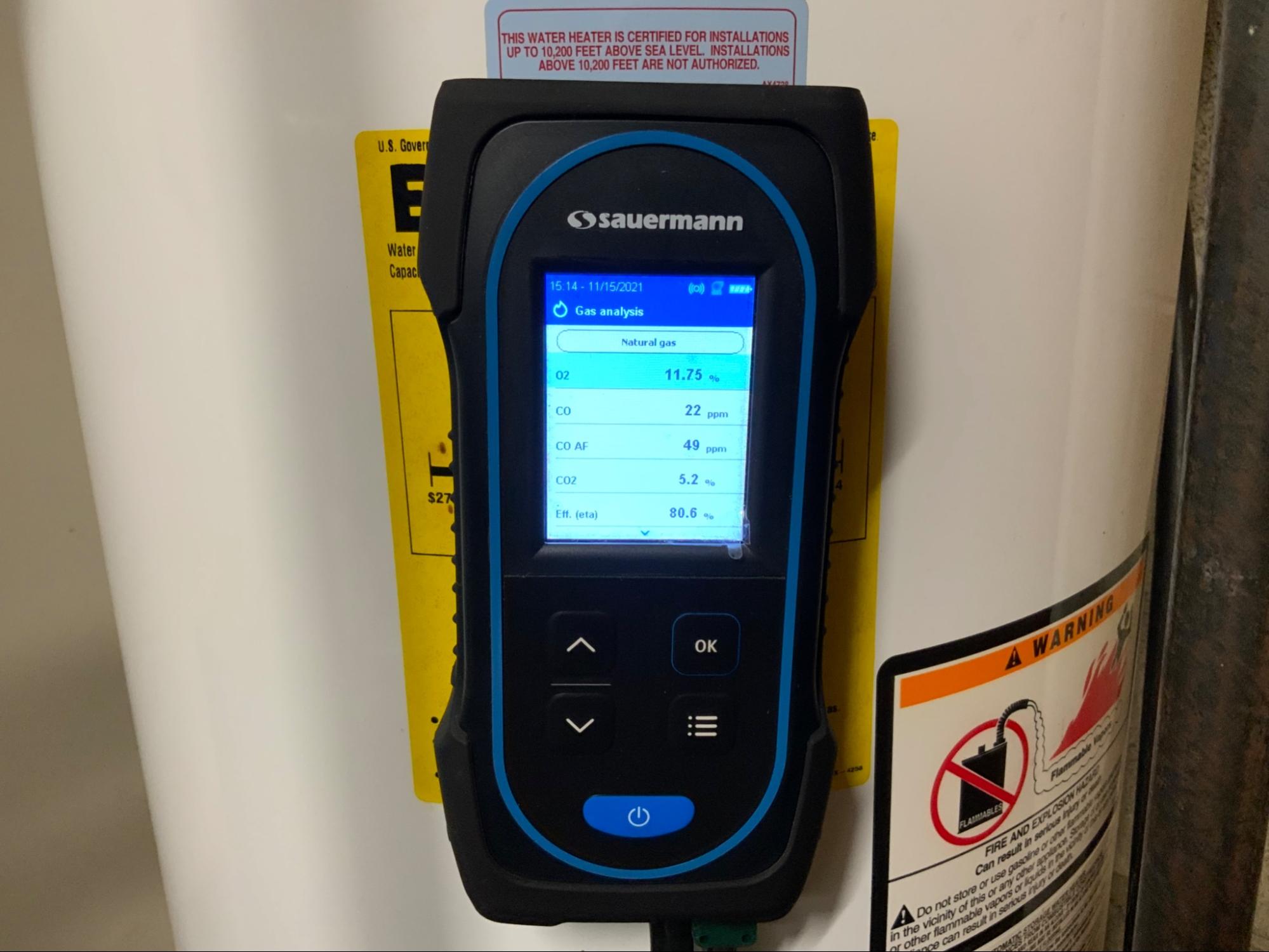
16. Gather all of your electrical measurements.
Check to make sure that the low-voltage circuit to the thermostat is doing everything it should be doing. Remember, there should be 24v of electrical potential between the thermostat and circuit board at the furnace.
If you have a high-efficiency furnace, check to make sure that the float switch is wired to break R (or sometimes Y) in the case of a condensate backup. In cases where a condensate pump or secondary overflow pan is part of the system, breaking R is usually ideal. Breaking R ensures that the furnace itself will be turned off if there’s a condensate leak.
17. Calculate the temperature rise.
Once the system has been running at its max output for about 20 minutes and has stabilized, you can calculate the temperature rise. Just like the delta T in heat pumps and air conditioners, the temperature rise of a furnace is the difference between the supply and return air temperatures. (When you take the supply air temperature, try to do it a few feet away from the furnace so that your reading doesn’t pick up additional radiant heat.) On the data tag, you will usually see a range that spans over 30 degrees or so (such as 45-75°F). In general, it’s better to be close to the middle of the posted range than close to either end of it.
Teardown from testing
You may have had to install some test ports and shut off valves to do tests and make necessary adjustments. Now is the time to make sure that you leave the system the way you found it.
18. Plug all test ports in the ductwork where you may have taken readings.
19. Verify that all gas pressure test ports are sealed.
20. Remember to turn the gas cock and gas valve back on.
21. Start the furnace one last time to ensure that everything you took apart is back together and that the furnace is running smoothly.
Clean up
How can the customer see that you’ve done a good job on the maintenance? Well, if everything is sparkling clean, then they can physically see that you’ve done something to make their system better.
22. Clean the outer surfaces of the furnace.
Be sure to clean off the surface of the furnace and make sure that it looks nice for the client. Cleaning the area immediately under and around the furnace also helps the customer, as they don’t have to worry about disturbing the equipment while cleaning. A good rule of thumb is to clean everything about one foot from the unit. (Of course, if you made a mess outside that range, you should clean that up.)
It can be hard for customers to tell whether maintenance agreements are worth their while if they can’t notice any major performance differences, but a clean system is sure to boost their confidence in you and your company.
Even though this gas furnace maintenance procedure may seem a bit long, it’s a critical process for the customer’s comfort and safety. Gas furnaces have more inherent risks than heat pumps, and routine maintenance is crucial to making them as safe for your customers as possible.
Again, I’d like to thank Michael Housh for sharing his procedure with us and allowing us to share it with you all on the HVAC interwebs.

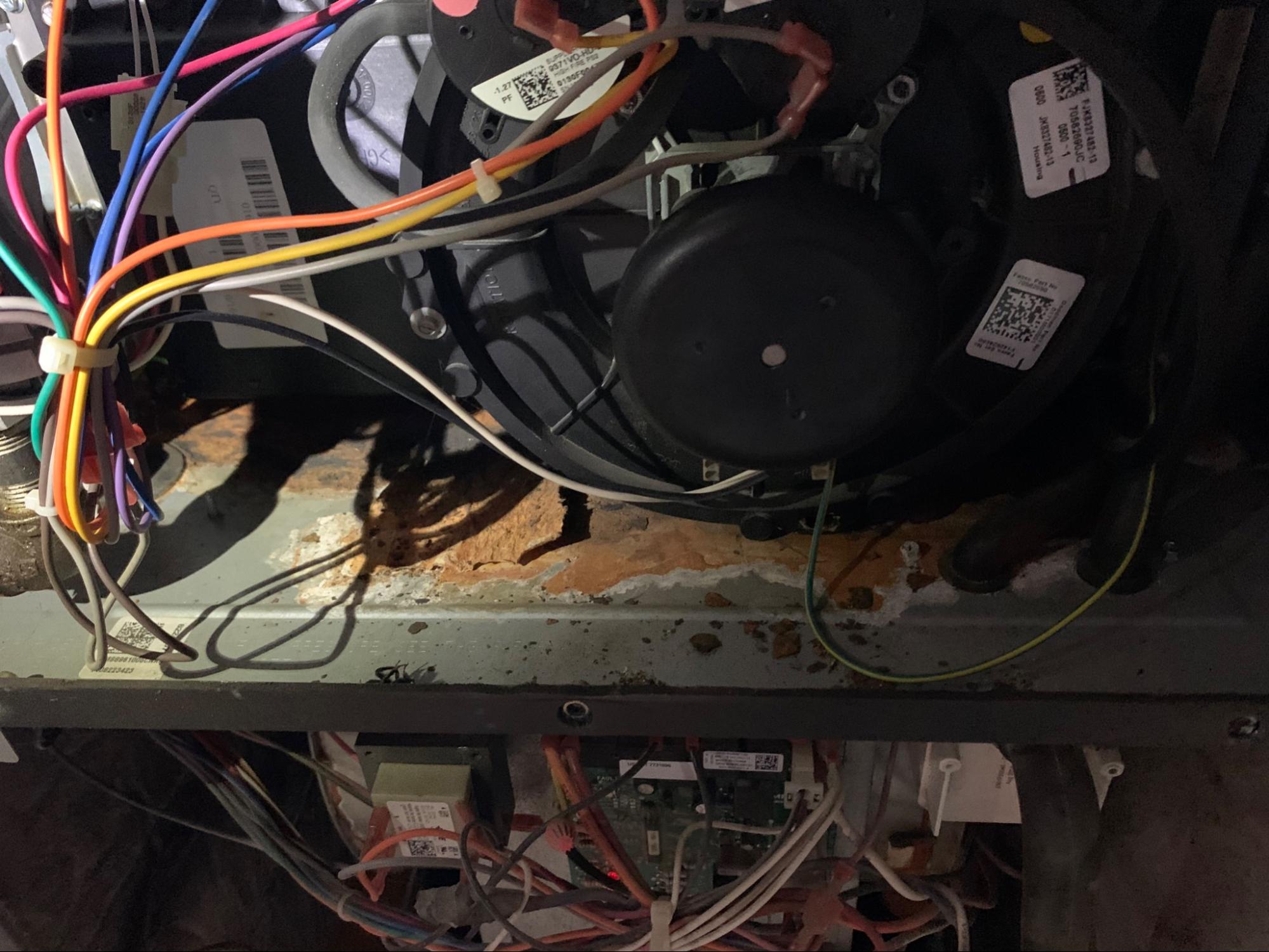










Comments
great content as always. Thanks for sharing.
great content as always. Thanks for sharing.
Thank you for telling me that a strange whining sound from a furnace is a sign of a problem that needs to be addressed. I never knew that a faulty component could cause this noise. I will pass this information along to my colleague, who just moved to this country earlier this year and is preparing for winter. https://www.myersheatingcooling.biz/residential-heating
Thank you for telling me that a strange whining sound from a furnace is a sign of a problem that needs to be addressed. I never knew that a faulty component could cause this noise. I will pass this information along to my colleague, who just moved to this country earlier this year and is preparing for winter. https://www.myersheatingcooling.biz/residential-heating
To leave a comment, you need to log in.
Log In